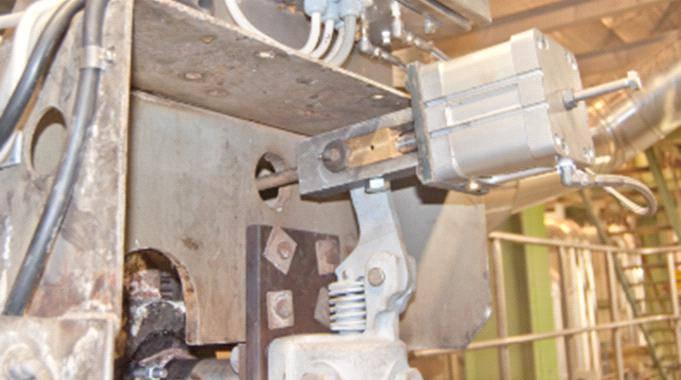
1 minute read
Solutions for Recovery boilers and Coal red boilers
The solutions used by Heat Management are:
· Infrasound fouling prevention
Advertisement
· Optimized steam soot blowing
Infrasound fouling prevention
Recovery boilers typically suffer from build-up of deposits in the duct between ECO and ESP (electrostatic precipitator). Infrasound cleaning (low frequency acoustic cleaning) is a fouling prevention method with unique power and cleaning range.
Typical results are:
-Solving clogging issues
-Drastically reduced need for manual cleaning
-Stable pressure drop over the duct
In coal red boilers the applications are mainly Economizers, Rotating Air Preheaters (RAPH) and SCR catalysts.
Typical results are:
-Stable pressure drop over RAPHs and SCRs

-Heavily reduced or eliminated use of steam soot blowing
-Reduced wear of heat exchanging surfaces
Infrasound system operation
The infrasound (15-30 Hz sound) is typically generated for 2 seconds every 4 minutes, keeping the heat transfer surfaces of catalyst surfaces clean continuously during boiler operation.
Compressed air, 6-8 bar(g) (85-115 pis(g)) is used.
The powerful infrasound waves are transferred to the ue gas, increasing the turbulence temporarily and ushing ash from surfaces before it has accumulated/sintered into thick layers.
The infrasound has a cleaning range and cleaning effect far superior to other types of acoustic cleaning, typically using 75-300 Hz. 12 infrasound generator are enough to cover a large cleaning area, such as a whole goose-neck duct after a recovery boiler or a whole SCR reactor on a coal red boiler
Optimized steam soot blowing of retractable soot blowers
Soot blowers in recovery boilers are generally operated non-stop, to keep the ue gas path clean and prevent the fouling and sintering of accumulations on heat exchanger surfaces. In many cases this is not enough, with resulting downtime for manual cleaning. Heat Management's optimization can increase soot blowing capacity by 100 %, without installing more soot blowers or steam headers. By introducing a simple local control on each soot blower steam (poppet) valve, existing soot blowers can be upgraded to one-way soot blowing, without taken the boiler down and disrupting the chemical recovery process. During boiler shutdown, the control system is upgraded to achieve overlapping operation of soot blowers. The technology constitutes a step-change in soot blowing technology, doubling the capacity (starts per day) without installing more soot blowers or consuming more steam. If more starts is not top priority, the technology can be used for saving 50 % of the steam consumed by sootblowers.
To sum up, by equipping the sootblowers with our actuators for regulating the steam ow locally we can obtain:
-Up to 50 % reduced steam consumption of the steam soot blowers
-Double the soot blowing frequency
-A combination of above





